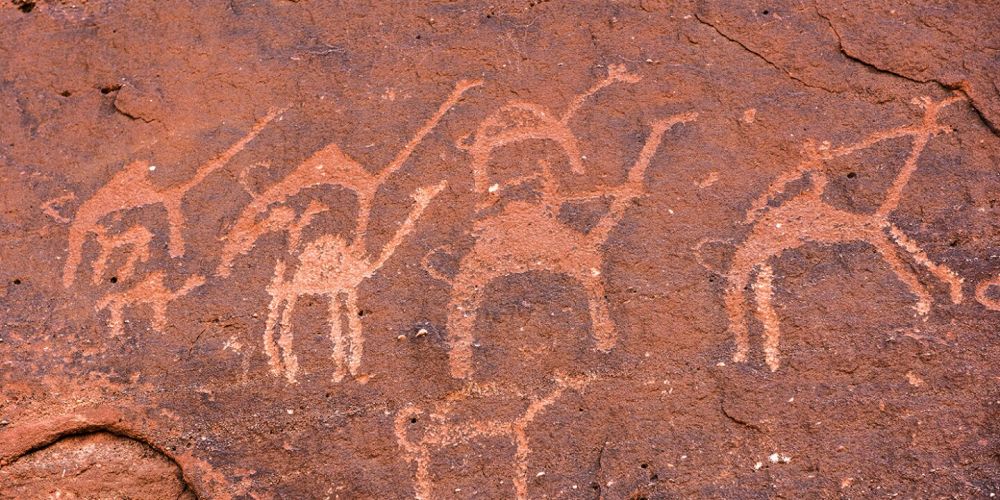

Wadi Rum, also known as the Valley of the Moon, is a stunning desert landscape in southern Jordan that has captured the imaginations of travellers for centuries. The region is famed for its towering sandstone mountains, dramatic cliffs, and enchanting desert vistas. However, its appeal is not merely in its natural beauty, but also in the rich tapestry of history etched across its sands. Of the numerous archaeological treasures Wadi Rum boasts, the Alameleh Inscriptions stand out as a silent yet profound testament to the historical significance of this area.
The Alameleh Inscriptions are a collection of petroglyphs and inscriptions found in the Alameleh area within Wadi Rum. These inscriptions are believed to date back to various periods, including the Thamudic and Nabatean eras, offering valuable insights into the thoughts, beliefs, and daily lives of ancient peoples who once traversed these deserts. Visitors to Wadi Rum are often drawn to these inscriptions as they represent an authentic connection to the past, allowing a glimpse into the realms of antiquity.
Tourism in Wadi Rum can be traced back to the early 20th century when the area became more accessible to Western visitors. The legend of Lawrence of Arabia, who was based in Wadi Rum during the Arab Revolt of 1917-1918, sparked initial interest among European travellers. However, it wasn't until the latter part of the century that tourism started to significantly increase.
In the 1980s, Wadi Rum was recognized as both a natural and cultural heritage site, leading to its designation as a protected area in 1998. This recognition helped to bolster its appeal as a destination for both adventure and cultural tourism, attracting tourists interested in rock climbing, hiking, camel safaris, and the exploration of ancient Bedouin culture.
Recent trends in tourism at Wadi Rum reflect a growing emphasis on sustainable and experiential travel. Visitors are increasingly seeking authentic Bedouin experiences, such as overnight stays in traditional Bedouin camps, enjoying local cuisine, and learning about Bedouin customs and traditions. Furthermore, the stunning landscape of Wadi Rum has made it a favored location for eco-friendly, luxury camping or "glamping," which offers comfort while minimizing the impact on the delicate desert environment.
The fascination with the Martian-like terrain of Waid Rum has also led to a surge in astro-tourism, with many tourists arriving to stargaze under the clear desert skies. The region's pristine nightscapes offer an incredible opportunity for observing celestial phenomena away from the light pollution of cities.
The Alameleh Inscriptions, along with the spectacular natural scenery of Wadi Rum, have played a vital role in Jordan's tourism development. As travelers continue to seek destinations that combine nature, history, and culture, Wadi Rum is poised to remain a key attraction for those venturing to the Middle East, offering an experience as timeless as the inscriptions themselves.